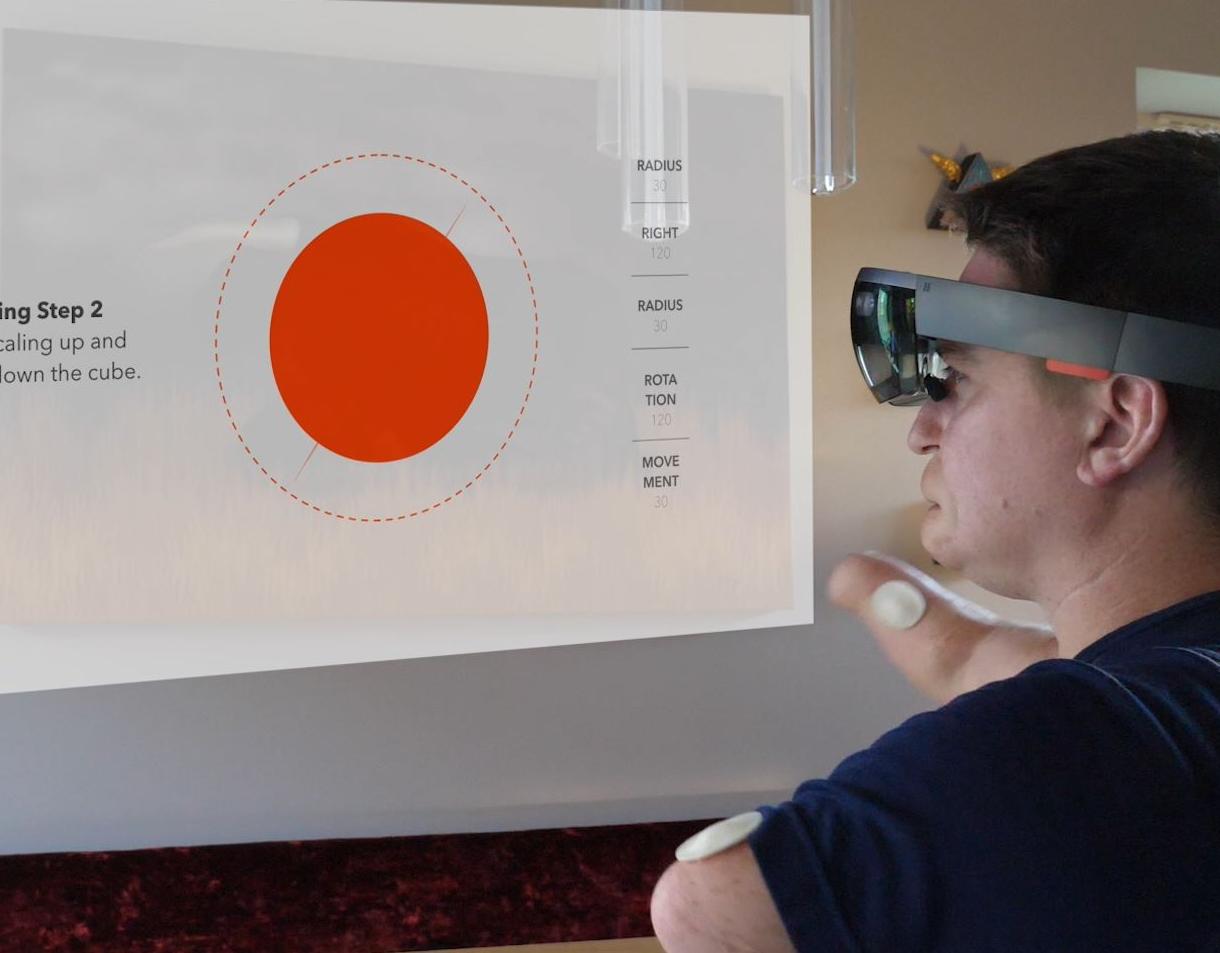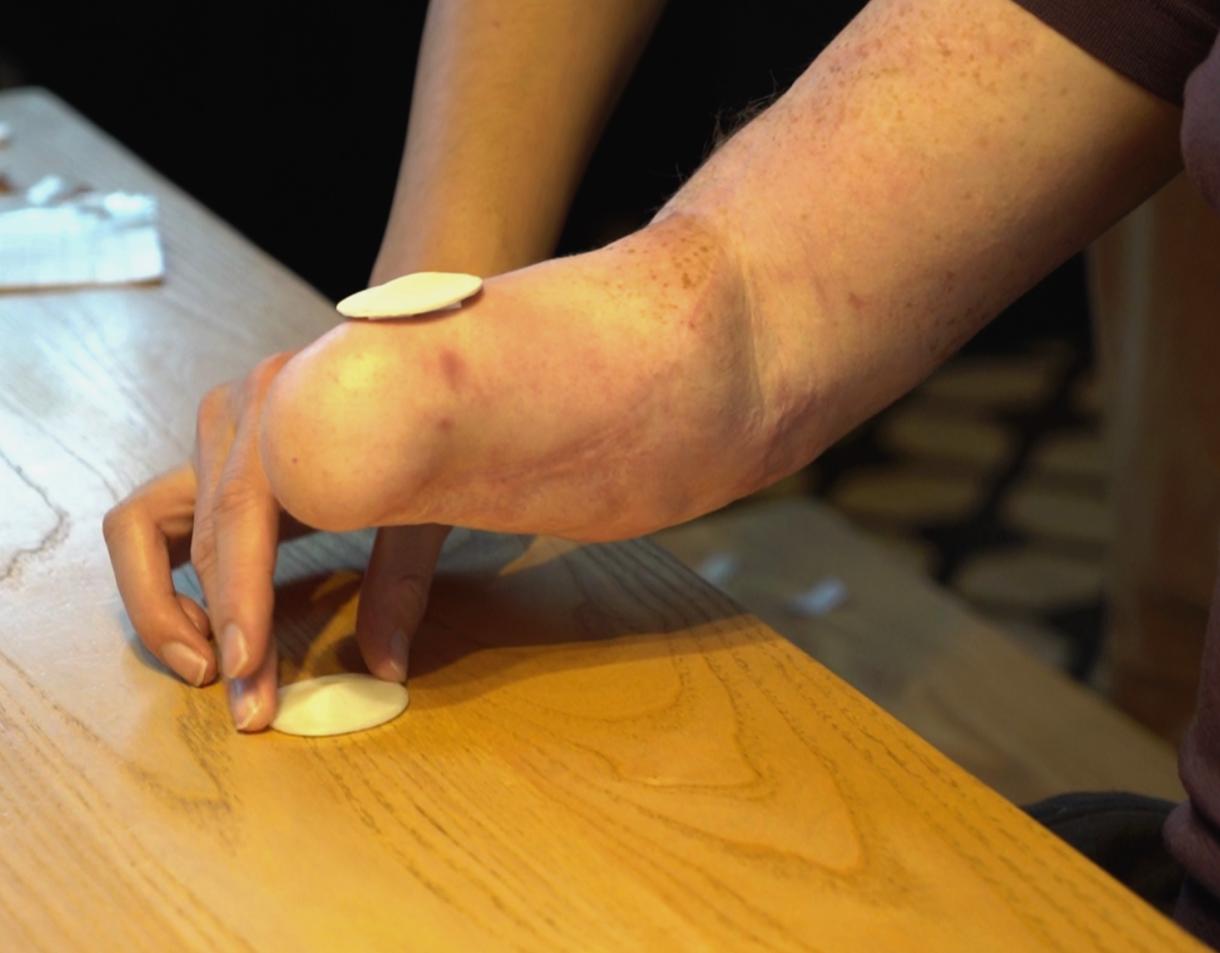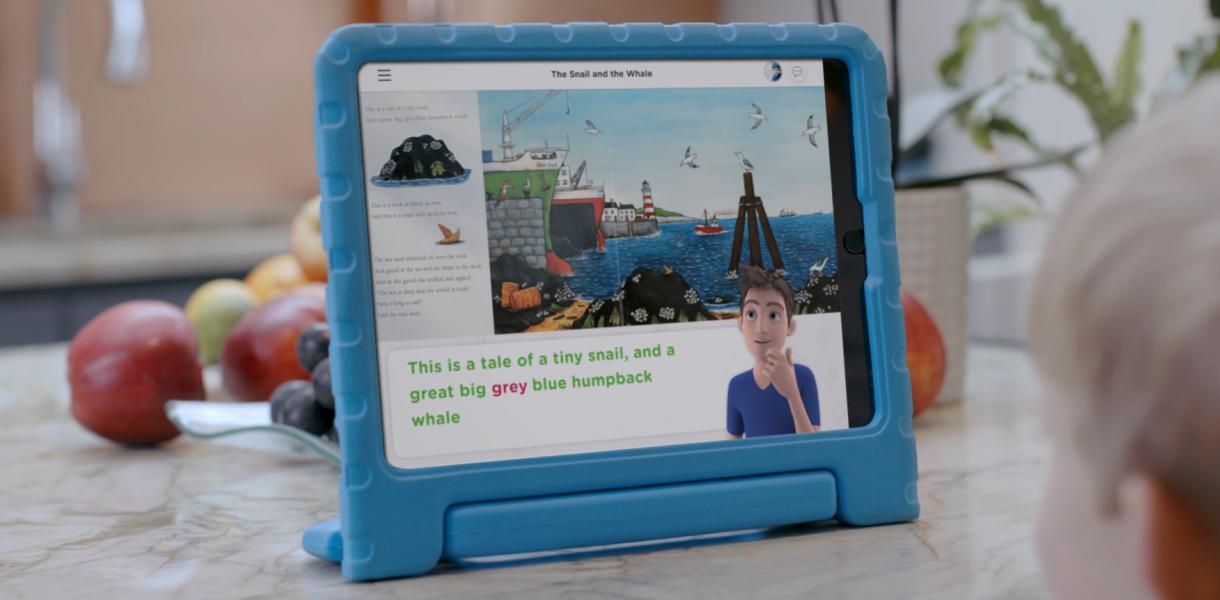What’s the design in a nutshell?
An inclusive interface for future spatial computing enabling people of all abilities to design and use future technologies.
Why is it needed?
The digital world is rapidly evolving with the development of Mixed Reality and the Internet of Things (IoT). And as we draw closer to linking the digital and physical, we’re approaching an exciting era of AR interfaces and gesture-controlled smart devices. Still, we’ve forgotten to make them accessible to all.
It’s not just those who don’t have access to digital resources that miss out, but those who have trouble physically using the tools. Put simply, to use any form of spatial computing; you typically need the full use of both hands. Unfortunately, designing for inclusivity seems to always come as an afterthought rather than being embedded in technology from the beginning.
How does it work?
Dots is a tool that ensures everyone can enjoy full control of any spatial interfaces in Mixed Reality and the Internet of Things. The two-point body gesture recognising system contains two attachable 'dots' that each contain a sensor, similar to those used in smartphones and tablets, and one wireless charger. Users can simply attach the two dots to any two movable body parts, such as a chin and an arm, to control the digital systems.
Dots uses an application programming interface (API), a software that allows two applications to talk to each other, connect with a particular device and act as a controller for it. As a result, users can have full control of any 3D interface with just four fundamental patterns: selecting, moving, rotating and scaling. These four patterns are communicated by the relative motion between the dots attached to the two body parts.
"Dots can help ensure people of all physical abilities will be able to use these digital technologies for work and play as they emerge."
How does it improve life?
In the not-so-distant future, the computer interface will shift from touch screens to the surrounding environment. Dots can help ensure people of all physical abilities will be able to use these digital technologies for work and play as they emerge. While more inclusive technology products are entering the market, they’re often highly bespoke items designed for small target groups with individual disabilities. Dots is one flexible system for many potential uses that users can adapt to different applications and needs.
What’s the impact to date?
Dots have tested their beta products with the UK-based Alex Lewis Trust, led by quadruple amputee Alex Lewis, and several users with various disabilities. During the interaction test, they both successfully achieved the manipulation of AR interface control in the Hololens and the IoT control of Philips smart light. With further development, Dots can be used to control any spatial interfaces and augmented/virtual reality devices such as the Oculus and smart TVs. In addition, the designers found that with additional adaptable design, Dots can also be used to control 2D interfaces like smartphones and laptops.








